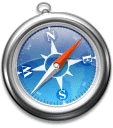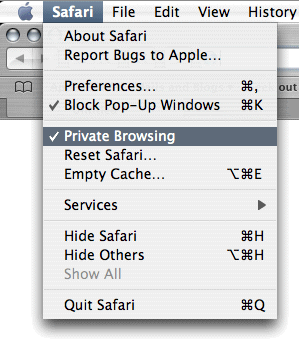 Safari 2.0
Safari 2.0, Apple's own web browser, now offers a function called 'private browsing'. You can easily locate it at the menu bar.

Background check
Web browsers typically record all sorts of information regarding your web-surfing activities. The most common one is the 'history', which stores all the URLs that you have visited. Next is the so-called 'cookie', in which some websites leave markings for all kinds of purposes like identifying you as returning visitor or providing customized page responds. The third one is the 'cache', which stores web elements like html files and images on your disk. The purpose of the cache is to fake an impression of faster loading the next time you visit the same site, as some bytes are already on your computer.
What's the offer?
Okay, no more geek's talk. What you really need to know is that when you activate 'private browsing', Safari leaves NON of these trails on your computer. It makes sense in terms of personal security because many
phishing attempts, whether to steal your precious identity or just to monitor what you do on the internet, are accomplished by sniffing through the cookie and cache. This feature also makes it impossible for people in-the-know to walk through your computer and obtain sensitive data like your online banking user ID.
Does that mean no one is watching?
If you are fancied with the idea that by not leaving any trail you are free to do anything without bearing the consequences, you should quit thinking that way now. Private browsing is NOT a tool for you to bypass the law, because whatever you do is still traceable by your internet service provider. It is only a tool that prevents malicious codes and people to steal your identity and privacy. You can also disable this option by means of Parental Control when you setup less-privileged account on your Mac.
Yet another Mac tip is on the web!



